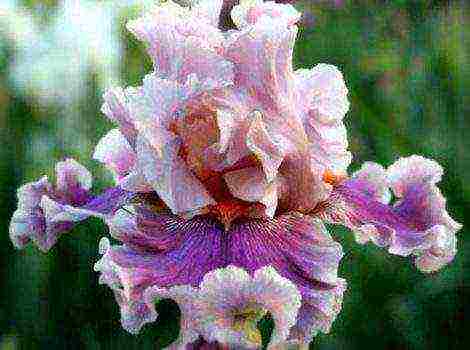Content
- 1 What kind of plant is a violet?
- 2 Varieties of violets
- 3 Rare violet
- 4 Growing conditions
- 5 Annuals
- 6 Perennial varieties of violets
- 7 Using garden violets in home design
- 8 Garden violet in urban landscape
- 9 Planting and breeding violets
- 10 Sowing violet seeds
- 11 Violet care
- 12 Pests and diseases
- 13 Viola as an annual, biennial and perennial crop
- 14 A brief overview of some varieties of garden violets
- 15 Conditions for growing garden violets
- 16 Breeding methods for garden violets
- 17 Features of growing ampel violets
- 18 Compositions for feeding garden violets
- 19 Diseases and pests of the Wittrock violet
- 20 Forcing garden violets by March 8
- 21 Florists' questions about growing garden violets
- 22 Varieties and types of garden violets (pansies): photos, names and descriptions of perennial flowers
- 23 How to plant pansy plants outdoors
- 24 Street perennial violets in garden compositions
- 25 Scented garden violets: varieties of perennial flowers
- 26 Correct planting of fragrant pansies in open ground
- 27 Care when breeding perennial violets
- 28 How not to make a mistake when buying violets
The pansy flower, scientifically - a garden violet, is an adornment of every flower bed where it is planted. Caring for this plant is simple and accessible to any beginner in floriculture. And what a variety of tones and shades! Previously, only lilac-violet gamut prevailed, which is where the name came from. Modern garden violets will bloom the flower bed in red, blue, purple, yellow, pink, orange and even white colors. If you want something special, then the velvet black flower petals will definitely attract attention.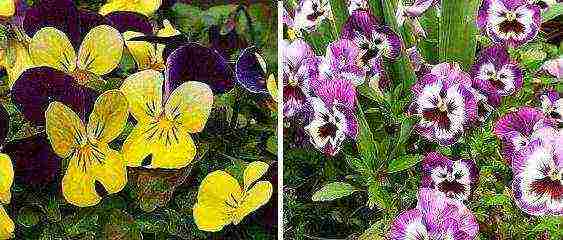
What kind of plant is a violet?
The name of this flower comes from the old Roman "viola" and was used in the creations of Pliny and Virgil. The garden violet, a photo of the varieties of which are presented in this article, is the oldest garden culture. Two millennia ago, the Romans and Greeks used it in wreaths to decorate rooms.
At the end of the eighteenth century, a botanist from Russia P. S. Pallas, who studied the Altai flora, brought this flower from Altai to St. Petersburg for the first time.
Violets are herbaceous one-, two- or perennial plants. The leaves are arranged in turn or collected in a basal rosette. The flowers are solitary, the upper petals are smaller than the lower ones, have a horn-shaped outgrowth or saccular at the base. The violet fruit is a capsule, the seeds retain the ability to germinate up to two years.
The genus of this plant has about 500 species that have spread throughout the world. There are both wild and cultivated species.
Varieties of violets
Many amateur gardeners grow violets of garden varieties in their flower beds, most often biennial or annual plants. A characteristic feature of such varieties is that they bloom in early spring and sink into the snow with flowers. Better than others of this species, the Vittrock violet has taken root in Russia.
But there is another species - perennial garden violet. She is quite capable of decorating a flower garden or flower bed for many years. But perennial garden violets delight the look with generous and luxurious flowering only in spring, since in summer they lose their decorative effect due to the formation of many seed bolls. A procedure such as pulling out wilted flowers in time will help lengthen the flowering period. Usually, fragrant violets and horned violets are grown as perennials.
Rare violet
It is worth noting a rare perennial variety of this plant. This is a white garden violet.In nature, it grows in forest glades, forest edges or in steppe meadows.
This is a beautiful small plant up to 12 cm high, the rosettes of the leaves look like a triangular heart. The flowers have a characteristic fragrant aroma. White violet can reproduce vegetatively or by seeds that are in a capsule, in a hairy ovary.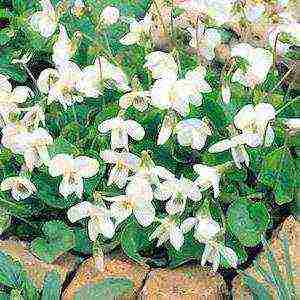
The violet blooms from March to May, and bears fruit from May to July. It grows in Podillia, Ukraine (in Transcarpathia) and here and there in the Crimea.
The problem with this species is that the white garden violet (photo above) disappears. This happens because steppe and meadow slopes are plowed up, shrub thickets are being destroyed, and natural conditions are changing. And since the populations of the white violet are mostly isolated, its resettlement to other zones is difficult.
Populations of white violets are restored under special conditions - in botanical gardens - and are under protection.
Growing conditions
The garden violet prefers sunny or slightly shaded areas that have fertile, well-drained soil. In dry weather, the plant needs watering, otherwise the flowers become smaller and flowering may stop altogether.
Despite the fact that violets are moisture-loving plants, they cannot tolerate excess moisture and can simply die during the spring thaws.
This plant easily tolerates light shading or diffused light, but the formation of many flowers and abundant flowering is possible only in a well-lit area. In places that are hidden from the sun and prone to dampness, the violet can be spoiled by slugs.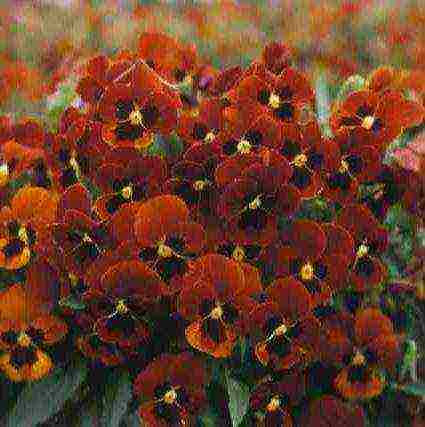
Perennial garden violet more and more wins the souls of flower growers. Only grow it as an annual or biennial. For the most part, this is due to the fact that over time, the stems of the violet are very elongated, and the flowers are reduced in size. It is obvious to everyone that it is easier and faster to plant new plants.
Annuals
The root system of annual violets is fibrous, that is, there is no main root, but there are a great many small roots. They penetrate the top layer of the soil with a wide network and do not go deep into it. Branched stems, on each branch usually several flowers open. The flowers of the annual are very large, reaching 10 cm. The annual garden violet is a neat decorative shrub up to 20 cm in height.
The most popular are the following types of peers:
- Chalon Supreme is a series of varieties with ruffled seven-centimeter flowers of extraordinary beauty.
- Rose Shades is a variety with pale pink petals and a purple center spot.
- Cherry Pie Mix - purple or maroon flowers with a white border.
- Flame is a variety with fiery red flowers bordered with orange edging.
- Cats is an interesting series of strains. It differs in that in the center of the flower you can see a pattern similar to a cat's face.
- Jema is a series specially designed for hot regions.
Perennial varieties of violets
The perennial garden violet, the photos of the varieties of which demonstrate its beauty, is popular among amateur gardeners. The following varieties are especially common:
- Viola odorata - fragrant violet. Quite unassuming, highly aromatic plant, about 15 cm tall. It has creeping stems that take root easily, heart-shaped leaves are collected in bunches. The flowers are approximately three centimeters in size and can be double or plain and are usually purple or blue in color. The fragrance intensifies in the evenings.
- Viola cornuta - horned violet. It is a perennial plant approximately 8 to 20 cm tall. Flowers of this species are distinguished by the characteristic presence of spurs on the back. The size of the flowers of this plant is from one to four centimeters, the color mainly has a white-blue-yellow range.
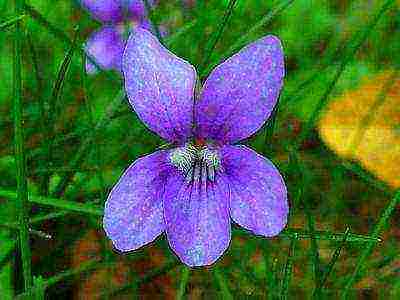
Using garden violets in home design
The garden violet, planting and caring for which is not difficult, is indispensable for use in the design of alpine gardens. On slides or flat rockeries, created of stone, it looks especially beautiful and graceful because of its small size, which is further emphasized by the rock.
In the garden, violets are also used to decorate ridges, flower beds and borders. These plants feel quite well among shrubs and trees, not far from water bodies. They are also suitable for growing in a variety of garden pots, containers and balcony boxes. All kinds of braids with these romantic flowers look very interesting.
Violets behave well in a limited amount of soil - in pots or pots. This plant is best for use in tiered stands and for creating small and large potted groups.
It is great to plant a fragrant violet near resting places or in front of windows in the front garden.
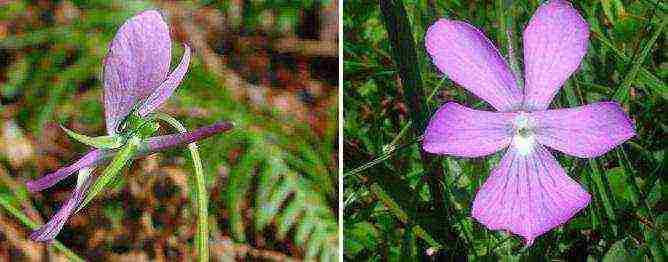
Garden violet in urban landscape
The perennial garden violet is actively used in the landscape of cities. Photos of flower beds with this plant are unusually picturesque.
Violets are rightfully classified as flowering herbaceous perennials, but their use in the design of urban ensembles is very limited. Mostly restrictions are imposed by their small size and rather short flowering time. This creates difficulties in the selection of partners and the placement of violets in the compositions.
For beauty and saturation, violets are always placed in groups or spots. The more significant they are planted, the more decorativeness, aroma, and beauty of flowering are revealed.
This is one of the most peculiar plants for bordering flowering shrubs, rose bushes or the formation of landscape carpets, which gives picturesque and delicate beauty to the whole ensemble.
Violets are also good along the edges of flower beds or mixborders, where flowers are planted in the first line so that they can be seen. It is good if the period of their flowering coincides with the period of flowering of some plant that is planted in the depths of the flower garden.
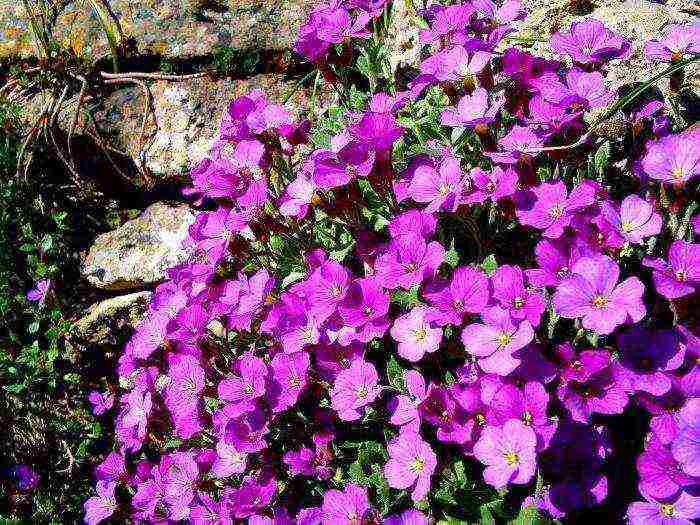
Planting and breeding violets
Regardless of the variety and species, perennial garden violets, the care and reproduction of which will not give you any special problems, disperse well by self-sowing. Manually, they are propagated by cuttings, sowing seeds or layering (dividing bushes):
- Cuttings are cut from May to June. Violet stems are divided into five-centimeter segments. Any such piece of the shoot should have three knots. All the flowers and some of the leaves (you need to leave three) are torn off, and the cuttings are tilted into a container with fertile moist soil by 1 cm.A month later, rooting will occur and the plant can be transplanted to a permanent place with a distance between the bushes of 10-30 cm.
- For layering, a long stem is chosen from the side and bent to the ground, reinforced with a hairpin and sprinkled with soil. After a month, the branch will take root and can be separated.
- Another method of reproduction - by dividing the bush - has a horned viola due to a special rhizome branching in all directions, from which young bushes grow. The common bush is dug up and divided into parts.
Sowing violet seeds
The garden perennial violet reproduces perfectly by seeds. Planting and caring for her begins in the fall. Fresh seeds are sown in the soil in September, and shoots appear next spring.
Sowing Vittrock violet seeds depends on the planting goals:
- To obtain annuals, seedlings are sown in early spring, when the temperature rises to +10 ° C. After sowing, the seeds are lightly crushed with soil and covered with foil. The sprouts will sprout in about a week. When the seedlings have at least four leaves, they are planted in a permanent place.
- For a two-year planting, seeds are sown in June on a raised plantation. They do not sow immediately on a flower bed, since it is not known how many seedlings there will be. If not all ascend, then there will be a "bald head".After a couple of weeks, sprouts hatch, after the appearance of two true leaves, the seedlings dive. At the end of summer, young plants are planted in a permanent place with a distance of 10-15 cm. They will bloom only next year, but the flowers will be larger and there will be more of them.
Violet care
In general, viola is an undemanding plant. But there are a number of conditions that must be taken into account when growing it.
Violet desperately needs a sunny spot. But it is able to grow in partial shade, only its stems begin to stretch intensively and the bush loses its shape.
It is imperative to water this plant often: it adores moisture. But if the bed is arranged in a lowland, then you need to take care that there is no stagnation of water.
Every couple of weeks to feed the violets, you can use any mineral fertilizers for flowering plants, but avoid fresh organic ones: the viola has a bad reaction to them.
Flowers that wither should be systematically cut off, so the plant will caress the eye with flowering for a longer time.
In very hot weather, the stems of the viola grow intensively and the bush loses its decorative effect. In order to return the plant to a compact form, it must be cut. It is even worth cutting off the shoots with flowers. The stems should be about 8 cm long. After a couple of weeks, the viola will revive and will continue flowering again.
Garden violets do not like damp and cold winters. The planting should be easily covered with spruce branches or tree foliage.
Pests and diseases
Like any garden plant, the violet is susceptible to damage by diseases and pests. The main ones are:
- Powdery mildew affects stems, leaves and buds, spiderweb bloom and black dots appear. It is treated by spraying with antifungal agents.
- The leaves are affected by spotting, the plant dries up, the infection can persist even in the seeds. It is necessary to destroy and dig up the garden bed, treat it with chemistry.
- The stem base becomes thinner and darker. This is a black leg. The reason is that the crops are thickened, the illumination and moisture regime is violated. The bed must be loosened, thinned out and treated against fungus.
- The flowers are covered with gray rot - a fluffy bloom with decay. The reason is little light, a lot of moisture and nitrogen. Treatment consists of thinning, airing, fertilizing. Chemical treatment is also needed.
- In May-June, the plant is affected by the caterpillars of the clover moth and mother-of-pearl violet. It is necessary to spray with tobacco infusion and chlorophos when young caterpillars appear.
Garden violet or Vittrock violet is better known to Russian gardeners as viola. It is sometimes called "pansies", and this leads to some confusion: real "pansies" are a wild type of tricolor violet, which became one of the ancestors of the popular cultural form. In the article we will tell you how planting and caring for violets in the garden takes place, when to plant and how to propagate.
Viola as an annual, biennial and perennial crop
The Vittrock violet is one of those plants that is cultivated as both an annual and a perennial. It all depends on the winter hardiness of the variety and climatic conditions.In an annual culture, viola is grown through sowing for seedlings in February-March. A transplant into open ground is carried out at the end of May, and the plant in this case will delight with flowering all summer. After the end of the growing season, the viola is removed from the site.
When growing violets as a biennial plant, the seeds are sown in early summer, directly in the open ground. In August-September, grown seedlings are planted in a permanent place. For the winter they are mulched and covered with spruce branches. In the spring, overwintered bushes will start to grow and bloom in May.
The cultivation of viola in a perennial culture is possible subject to pruning, competent feeding and the construction of winter shelters. To extend the life of the plant, you need to trim the faded bushes to a height of 5 cm from the ground and feed them.We need to prepare for the fact that not all of them will endure a new wintering. In regions with harsh winters, it may be better to transplant the bushes into pots and send them to a cool room for the winter. Read also the article: → "Viola Vitrokka (Pansies): the secrets of growing and care."
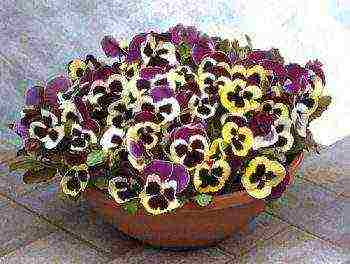
It is easier to organize viola wintering if it is grown in pots.
A brief overview of some varieties of garden violets
There are too many interesting varieties of viola to compile any TOP list. Florists who are passionate about violets usually try to acquire as many forms as possible. They differ in size, color and corrugation of the petals, the nature of flowering and the degree of cold resistance.
| Varieties and series | Characteristic | Cold resistance |
| Rococo | A series of varieties with large flowers with folded-corrugated petals of various colors. The height of the bush is 15-20 cm. Flowering is long, until frost. | Good |
| Frizzi sizzle
F1 |
Hybrid form of the Rococo variety series. With the preserved corrugation of the petals, it has increased stability. The color is varied - yellow-blue, burgundy, sunny yellow, etc. | Excellent |
| Mammoth F1 On Fire | Magnificent large-flowered hybrid with yellow-burgundy petals. Bushes 15-25 cm high, branching strongly and quickly. Bloom before frost. | Excellent |
| Colossus | Series bred for hot climates. Large flowers remain decorative in adverse weather conditions, do not fade. Abundant flowering, long lasting. | Low |
| Endurio F1 Pure Violet | Ampelny small-flowered variety. The color of the petals is dark purple, with purple highlights and a bright yellow center. An undemanding plant suitable for the implementation of various design solutions. | Excellent |
| Cool wave f1 | New ampelous variety series with large flowers up to 5 cm in diameter. The length of the lashes is up to 40 cm, the bush grows up to 75 cm wide. Abundant flowering, long lasting. | Excellent |
A series of Hemalis varieties deserves special mention. This group includes viols with increased winter hardiness and, with good care, suitable for growing in perennial crops. These include such varieties as Helios, Jupiter, Mars, Nordpol.
Tip # 1. When choosing violet seeds, you need to carefully study the expiration date. The time reserve before its end must be at least a year.
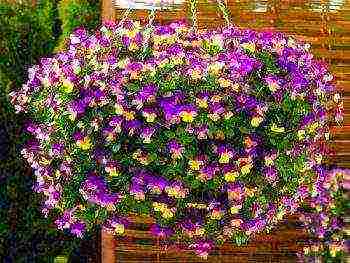
Ampel varieties of violets are an effective element of garden design.
Conditions for growing garden violets
In order for the cultivation of garden violets to be successful, it is important not to make the following mistakes:
Mistake # 1. Growing on unsuitable soils.
Viols love fertile, moist soil. Loose loams with a high humus content in the upper layers are most suitable for these flowers. Low-lying areas, where melt or rain water stands for a long time, are not suitable for garden violets. On dry, low-humus sandy loam, these plants will feel good, but the quality of flowers will decrease.
Heavy soil for planting viola must be loosened. You can do this with sand, but charcoal is better. It is both a conditioner, a sorbent, and a mineral dressing.
Mistake # 2. Insufficient lighting.
Garden violets are considered quite shade-tolerant plants. If there is no other place, you can land them in partial shade. However, with a lack of sunlight, their flowering will be scarce, and their resistance to adverse weather conditions will decrease. The best place for violas is an open, sunny area of the flower garden.
Mistake number 3. Incorrect feeding.
On depleted soils, violets bloom weakly and for a short time. However, it is not possible to increase soil fertility by all means. Fresh manure is categorically contraindicated for viols. It is better to use good humus and complex mineral fertilizers.
Breeding methods for garden violets
Viola can reproduce both by seeds and vegetatively by cuttings. It is difficult to say which method is better.Cutting allows you to preserve and quickly propagate especially valuable rare varieties. Growing from seeds is a longer process, but this is the only way to get a new variety of violets. Read also the article: → "Pansies: the secrets of growing and caring for bright flowers."
Growing viola from seeds
Sowing seedlings is performed at the end of February or at the beginning of March. It is important to choose the right soil - it must be nutritious and moisture-permeable. The soil "Terra Vita Flower Universal" is well suited for sowing viola. It is prepared on the basis of vermicompost, and it is quite fertile to successfully drive out healthy seedlings on it. The Seliger-Agro and Agricola-Fertility soils are also of good quality. reviews of gardeners about fertilizer Agricola. The starting mineral complex with which they are enriched provides enough nutrition for the beginning of plant life.
Seedlings are grown according to the following scheme:
- The seeds are treated with the Epin-Extra stimulator.
- The tank is filled with well-moistened soil.
- The seeds are laid out on the surface, without deepening, and sprinkled on top with sawdust of the smallest fraction (optional). The surface is sprayed with a spray bottle. The container is closed with an opaque lid or cardboard and left at a temperature of + 25⁰С.
- Before germination, crops are ventilated twice a day for 10 minutes.
- After germination (after 10-15 days), the lid is removed, and the container is transferred to a place protected from direct sunlight.
- In the phase of 2 true leaves, the seedlings are dived into separate pots.
- Landing in the ground does not occur before the threat of recurrent frost disappears. The night temperature should not drop below + 12⁰С.
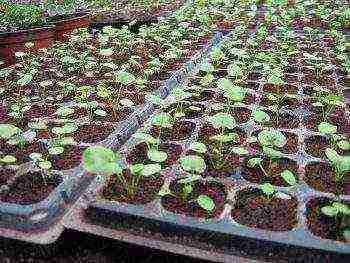
When sowing viola in cassettes, the stage of early picking can be avoided.
Cutting garden violets
It is convenient to combine cuttings with cutting of viola shoots. Thus, you can achieve two goals at the same time: breeding the variety and rejuvenating the old bush. The work plan for grafting looks like this:
- At the end of May, shoots are cut from an adult bush and cuttings 10 cm long are prepared.
- The lower sections are processed with Heteroauxin powder.
- Cuttings are placed in a loose, damp substrate, sprayed with water and covered with sunscreen.
- After 3-4 weeks, when rooting takes place, the degree of shading decreases.
- Transplantation to a permanent place is performed at the end of August.
Tip # 2. A cut-out violet may bloom already this year, but one should not be afraid to replant it. The plant easily tolerates this procedure even in a flowering state.
Reproduction of violets by self-seeding
Usually, the faded viola shoots are immediately removed so that the flowering lasts as long as possible. But if this is not done and the seeds are allowed to ripen, this plant is capable of producing abundant self-seeding. At the same time, the sown bush dies off. If this happens, you can leave the seeds in the flower bed and get seedlings next spring. As a rule, the quality of the plants obtained in this way is not very high, but you can cover some nondescript part of the garden with them for a while - they grow well.
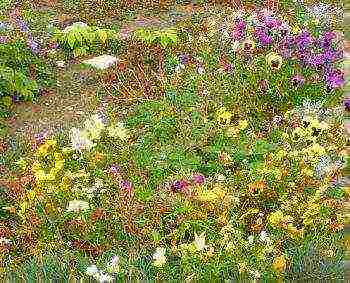
"Samoseyki" poorly retain the varietal qualities of the mother plant.
Features of growing ampel violets
Ampel and semi-ampel viola varieties are becoming more and more popular. In general, their cultivation does not differ from the cultivation of conventional bush forms. Some of the nuances relate to leaving. Since ampelous viols grow, as a rule, in a limited volume of soil, it is necessary to carefully monitor its moisture content. In no case should the earthen be allowed to dry out. On the other hand, you don't need to fill in the roots either. The pot should be well-drained. The optimal volume of the container is 5 liters.
The second important nuance concerns the care of the lashes. Often in summer, in the heat, the habitus of ampel viols becomes loose, falls apart, the plant loses its decorative effect. In this situation, the bush must be trimmed by cutting the lashes in half.It makes sense to transplant cold-resistant hybrids of ampel violets into open ground for the winter and cover them with spruce branches. This makes it easier to provide plants with optimal wintering conditions.
Compositions for fertilizing garden violets
For abundant and long-lasting flowering, garden violets require constant replenishment of minerals. According to the gardeners' reviews, the following compositions give a good result:
| Name | Method of application |
| "A flower paradise for primroses and violets" | Watering at the root during flowering.
Spraying in the budding phase. |
| "Mikom Flower Garden" | Spraying in the budding phase. |
| "Blank sheet for flowering plants" in sticks | At the beginning of flowering, place 1 stick in a pot under the ampelous viola.
There is enough food for the whole season. |
| "Pokon for flowering plants" in sticks | At the beginning of flowering, place 1 stick in a pot under the ampelous viola.
There is enough food for the whole season. |
| "Novofert Flowers" | Watering at the root during flowering. |
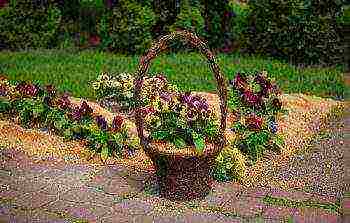
When grown in open ground, the viola is fed once every 3 weeks, in a pot culture - once a week.
Diseases and pests of the Wittrock violet
Unfortunately, when growing a garden violet, you can face a lot of problems. Viola often suffers from fungal infections and pests. Agrochemical preparations will help to cope with possible troubles:
| Problem | A drug | Method of treatment |
| Powdery mildew | Fundazol | 1 g per 1 liter of water, spray the plant and water at the root. |
| Ascochitosis | "Hom" | 3 g per liter of water, spray the plant |
| Gray rot | "Alirin-B" | Dig up diseased plants and burn them together with a root ball, spill the soil with a solution of the drug |
| Damage by caterpillars of mother-of-pearl | "Spark Double Effect" | 1 tablet in 10 liters of water, spray the plant |
| Gall nematode defeat | Fitoverm | 8 ml per 1 liter, pour over the root |
| Spider mite infestation | "Actellik" | 2 ml for 2 liters of water, spray the plants |
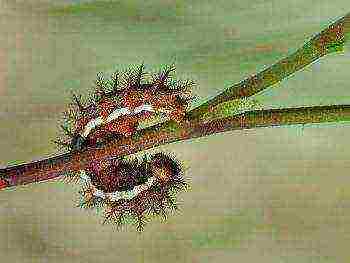
You can use tobacco infusion against mother-of-pearl caterpillars.
Forcing garden violets by March 8
Forcing is called a technique by which the premature flowering of plants is achieved. Viola is quite amenable to distillation and can become an original gift for the spring holiday.
To get a flowering bush by March 8, you need to follow these steps:
- Treat the seeds with Epin-Extra and sow them in a seedling container in October.
- Place the emerging seedlings under a phytolamp.
- After waiting for 2 true leaves at the seedlings, cut them into separate pots with a diameter of 10 cm with good drainage.
- Once a week, make foliar dressing with the preparation "Polygro Universal" (1 g per 1 liter of water).
- At the beginning of January, carry out a formative pruning: shorten the central stem, trim the side shoots to the same height to form a "hat".
- As soon as the first buds appear, add Nutrivant Universal (1 g per 1 liter of water) to the water with each watering. Viols obtained by forcing can subsequently be planted in open ground.
Florists' questions about growing garden violets
Question number 1. How to use viola in your garden design?
This plant is suitable for any type of flower garden. Looks good in borders, ridges, flowerpots, hanging pots. Can be used as a ground cover plant. Looks impressive among the flowering Moorish lawn. See also the article: → "Choosing flowers for planters, garden pots or hanging baskets."
Question number 2. Can viola seeds be buried when sowing?
It is possible, and this method is often recommended, since viola seeds germinate in the dark. However, it is possible to provide darkness in another way, but with surface sowing, seedlings appear much faster.
Question number 3. How to prepare the soil for viola seedlings yourself?
Quite good reviews of such a mixture: fertile garden soil, low-lying peat and humus in a ratio of 2: 2: 1. You can add a little vermiculite to loosen it.
Question number 4. How to choose a phytolamp for supplementary lighting of viola seedlings?
It is better to use LED bicolor phytolamps. In addition to the optimal light spectrum, they also provide significant savings, consuming little electricity.
Rate the quality of the article. We want to be better for you:
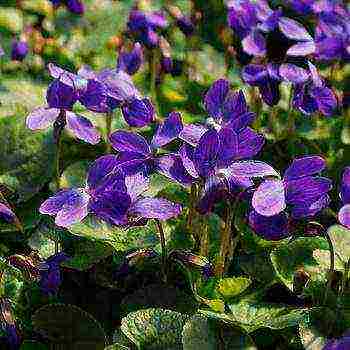 Everyone has their own preferences. Someone likes large inflorescences on tall stems, someone loves smaller and more tender plants. The indisputable choice in most cases is the violet; this flower has become popular for a long time. Most often it is presented in a flowerpot as a houseplant, but sometimes the inflorescence itself becomes an element of a beautiful bouquet.
Everyone has their own preferences. Someone likes large inflorescences on tall stems, someone loves smaller and more tender plants. The indisputable choice in most cases is the violet; this flower has become popular for a long time. Most often it is presented in a flowerpot as a houseplant, but sometimes the inflorescence itself becomes an element of a beautiful bouquet.
Many gardening enthusiasts grow exclusively pansies on their plots as an annual plant. At the same time, there are perennial species of these bright flowers that can decorate the garden for many years.
Perennial violets (Viola) are mostly May flowers, but they can please even earlier. Often violets "come" to the garden from the nearby forest, being proprietorily located in flower beds, rock crevices or under trees. The hand does not rise to weed out such natural self-seeding, and the charming creatures remain in the garden forever, already acquiring the name of the garden violet (or viola).
Look at the photo of what a perennial garden violet looks like, its leaves are arranged on the stem in the next order or collected in a root rosette:
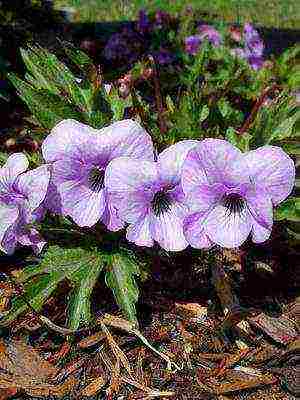
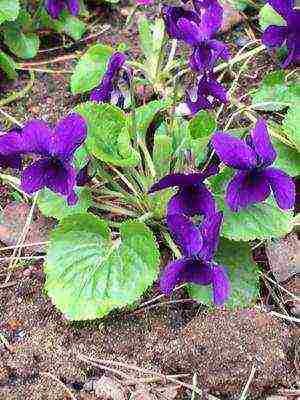
The flowers are usually blue, white, bright red and yellow.
In different countries, this flower has different names, since it has a wide geographical distribution, in Russia it is often called pansies.
Varieties and types of garden violets (pansies): photos, names and descriptions of perennial flowers
There are a great many violets that can be grown in the garden. They are conventionally divided into two groups: some have a horizontal spreading rhizome, while others all shoots grow from one root collar.
Among the existing flowers, the following varieties of garden violets can be distinguished:
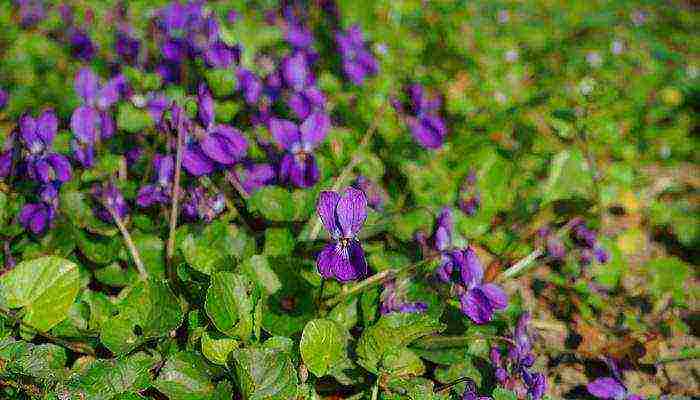
Squat plants scattering in different directions fragrant violets (V. odorata) bloom profusely with purple flowers in spring. This violet is the record holder for the speed of reproduction.
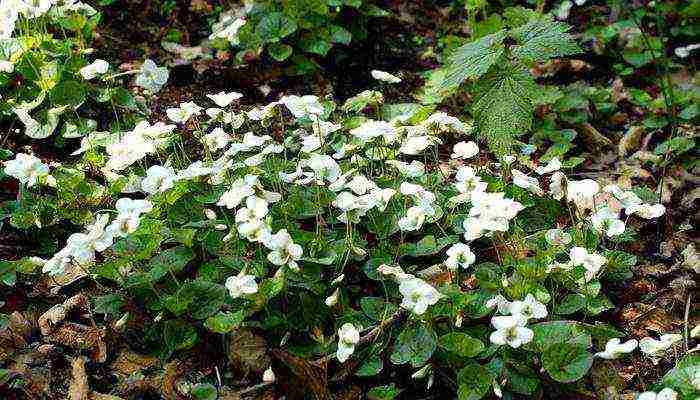
Violet sister (V. sororia) behaves more modestly: the curtain gains only 5-10 cm per year. How varied and large are its flowers!
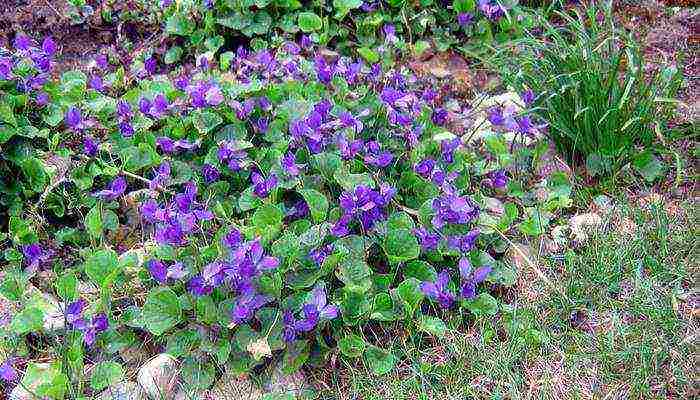
Grows even slower violet stopper (V. pedatifida). It is a delicate delicate species with leaves that look like small fans. The flowers are lilac, common to violets.
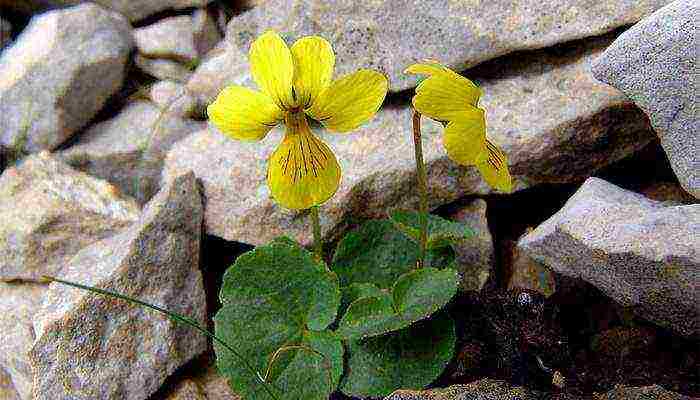
There are garden violet flowers, suitable for rockeries, look at the photo - this is a charming plant with small bright yellow flowers, violet Caucasian (V. caucasica), like the previous species, has a creeping rhizome.
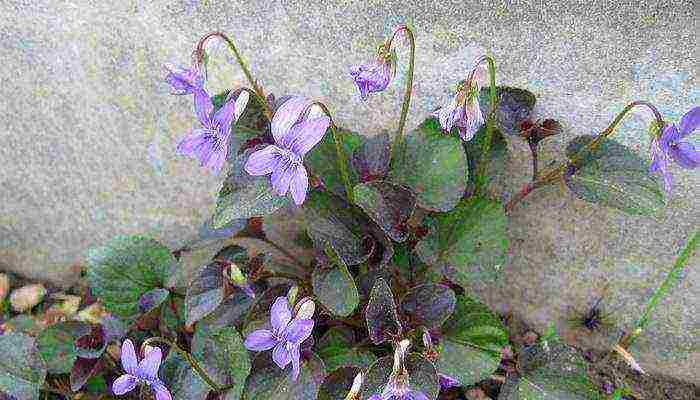
Violet labrador (V. labradorica) in terms of the conquest of territories can compete even with a fragrant one. Its seeds literally shoot out of the capsules. Self-seeding is very persistent.
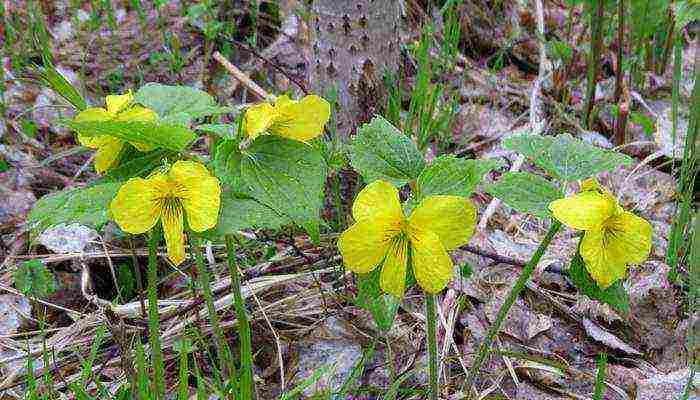
How does the trans-Ural ephemeroid behave violet one-flowered (V. uniflora). In spring it is a bush with large, original-shaped leaves and numerous sunny yellow flowers. From the middle of summer, the plant retires.
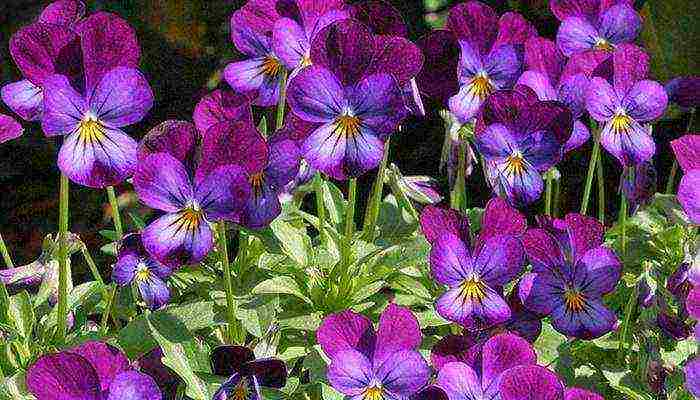
Horned violet (V. cornuta). It is gentle in appearance, it overwinters with green leaves and even retains some buds. Violet blooms from snow to snow, although, of course, the first wave in May is the most violent.
Self-seeding gives an interesting variable color of flowers. But cultural varieties for some reason do not hibernate. They are probably of hybrid origin.
After reading the description of some varieties and types of garden violets, learn about the rules for growing them.
How to plant pansy plants outdoors
The easiest way to propagate viola is by division and cuttings. To do this, it is enough to cut off the leaf with the stem and put it in water until the root appears.It should be noted that even if the reproduction of the plant is not planned, then at least once every three years it must be removed from the soil and divided. Otherwise, due to overly dense growth, the flowers become small and may lose the features of the species.
In species with a horizontally creeping rhizome, a bush can be divided. This is done as follows: you need to moisten the soil well, remove the plant and divide it, disassembling it into full-fledged bushes. Then each plant separately in flowerpots or in open ground. This is done in the spring, before flowering, or in September.
In other species, you can separate the branches from the base of the bush and root them directly in the right place. Under the banks, cuttings of a fragrant horned violet take root in two to three weeks.
The second method of plant propagation is sowing fresh seeds in prepared soil in the fall. The freshness of the seeds plays a very important role in reproductive performance. The garden violet prefers a place in the sun for planting, because in the shade it is often attacked by slugs. Also, these pests parasitize the plant if it grows in a damp place.

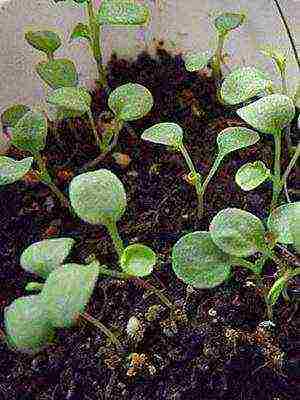
If a decision is made to plant plants by means of seeds, then you need to know what the planting and proper care of the garden violet should be. The seeds must be of good quality and the soil must be properly prepared. It is important to know that sandy soil is not particularly favorable for a perennial violet garden flower. Such soil needs to be improved with organic fertilizer, but not with humus, since it is aggressive to the soil and can burn the delicate roots of the plant.
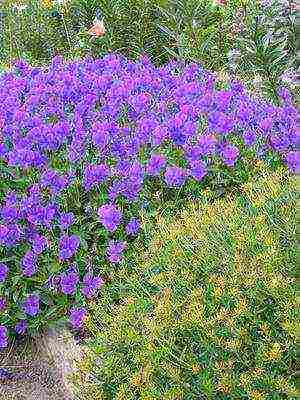
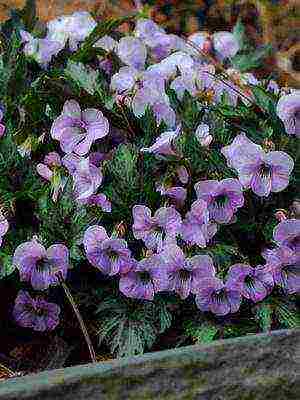
For perennial garden violets, timely and moderate watering remains an integral part of planting and care. It is worth noting that overflow has a bad effect on this plant, as well as too cold water. This does not mean that it should be warm, but the room temperature of the water for irrigation is simply necessary.
In extremely dry weather, watering should be adequate. With a lack of moisture, the flowers become smaller, the color fades, and the plant stops blooming. To extend the flowering period, rods with faded petals should be removed more often.

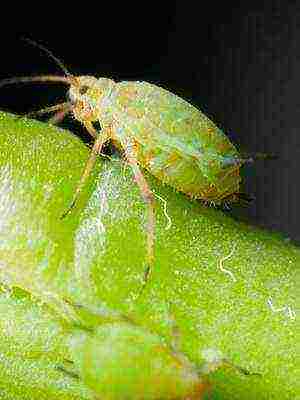
Violas are sometimes affected by pests such as scoops and aphids, so certain measures should be taken in time to protect the plant.
In order to properly handle the perennial garden violet bushes without injuring them when planting and leaving, you can see a photo with a sequence of actions:
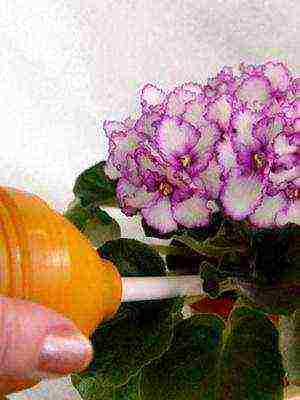

Street perennial violets in garden compositions
Any of the above can be attributed to this type of viola, since all violets grow without much whim in the open field. Their root system is located in such a way that they quickly germinate in loose soil. Such a flower can be a good addition or even a highlight of any composition. Balconies, flower beds, designer slides are decorated with street violets. Various design options for flower beds with street violets can be seen in the photo:
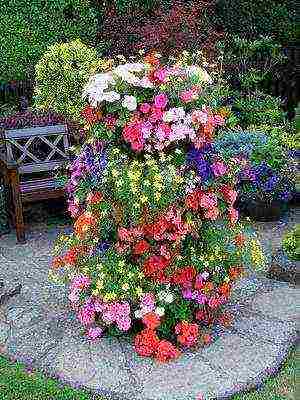
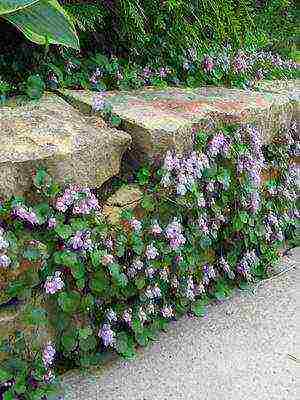
Violets are very plastic and unassuming in growing conditions. They can be grown both in the sun and in shaded areas. This allows you to create clearings from violets under tree crowns among other spring plants. In a garden, perennial street violet is widely used to decorate borders, alpine slides and flower beds. They can be planted with a luxurious carpet between trees and near artificial reservoirs.

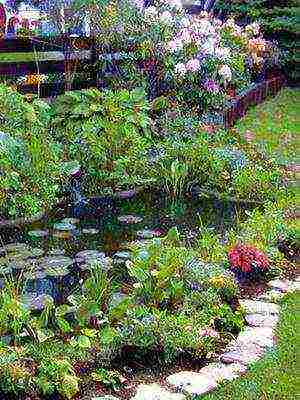
Take a look at the photo of flowers growing by the street violet pond, the variety of shades forms a delightful carpet and complements the landscape design of the resting place.
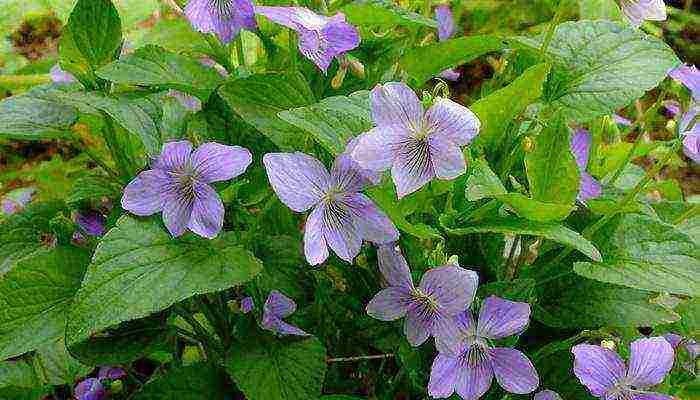
The violet labrador has purple leaves and lilac flowers. It can be planted next to plants that have silvery or yellow leaves.
The contrast is pleasing to the eye. How you can arrange a garden violet in a flower garden so that it sparkles with all the colors, look at the photo:
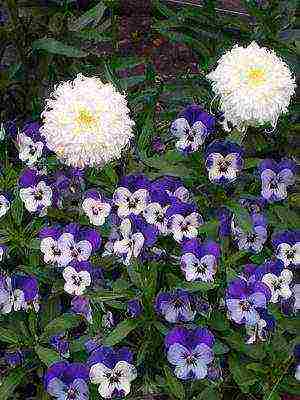

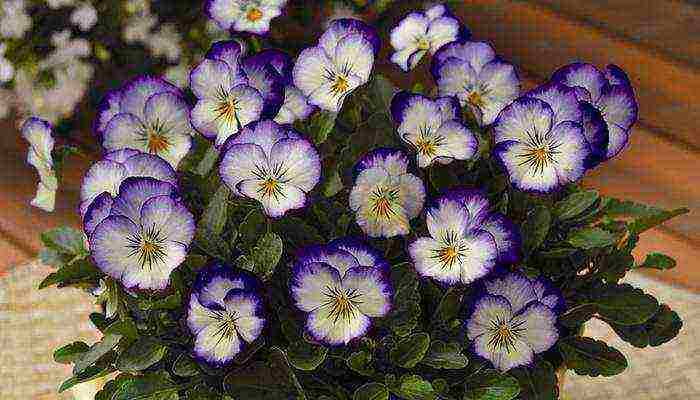
Horned violet, another species actively used in landscape design.It has small peduncles, therefore it is planted in groups.
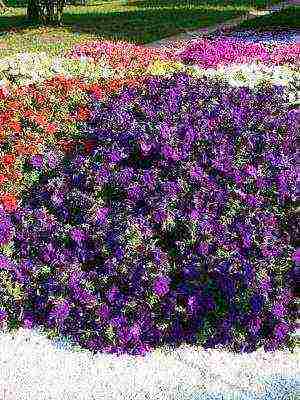
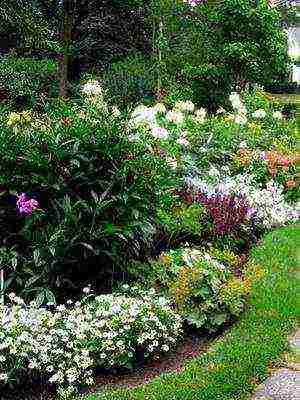
Another feature of it is the short stature of the bushes, therefore, in flower arrangements, it is planted in the foreground. The miniature size made this species a regular on balconies and verandas, it is convenient to use it in portable flower beds and flowerpots.
A successful neighborhood in garden compositions will be:
- coniferous shrubs;
- host;
- tulips;
- daffodils;
- hyacinths;
- ferns.
Taller plants will give the viola the much needed shade on a hot day.
Scented garden violets: varieties of perennial flowers
If you look into the history of the appearance of viola in Europe, then the first mentions begin just with a perennial fragrant garden violet. It was she who was the first to decorate the monastery gardens, and after her the mountain variety of the plant soon appeared. The fragrant garden violet is planted as a perennial crop and is often used in folk medicine as a remedy for severe congestive cough.
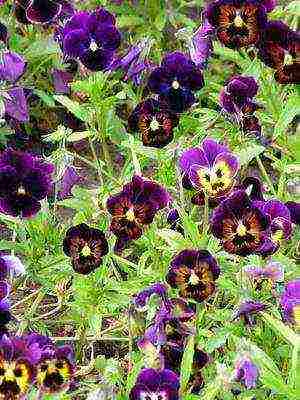
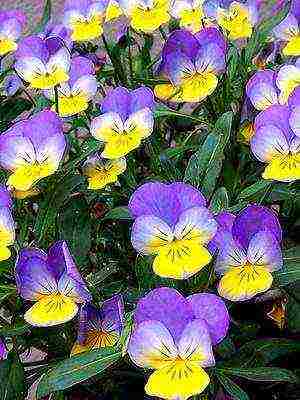
In almost every garden, even a novice amateur florist, you can see how the violet pansies are spreading their petals and bewitching with their tenderness. This flower is one of the types of perennial garden violet. As for the variety in the variety, there are two most famous types of this flower:
- viola tricolor (the so-called initial);
- a hybrid of Wittrock (this is a hybrid of a tricolor species and other more wild varieties: Macedonian, morning, subalpine).
It is the second species (hybrid) that is so popular in gardening because of the variety of colors, there is even an extraordinary black hybrid. The disadvantage of all hybrids in general, and this in particular, is the weak resistance to various diseases.

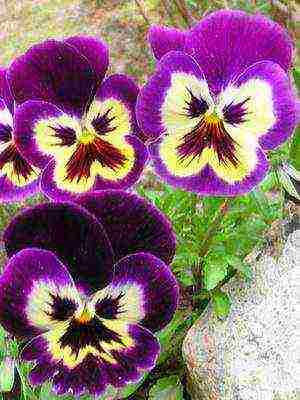
Pay attention to the photo, the flowers of the violet pansies in the lower part of the peduncle are bright yellow, and in the upper part they are purple.
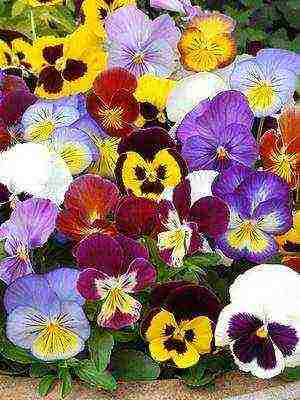
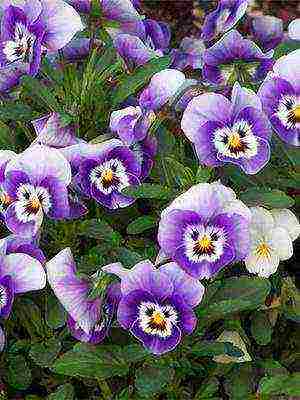
The plant has a very beautiful flowering. Recently, various hybrids of this flower have been bred by breeding, so it can be found in very bright colors and amazing combinations. For example, each petal can be of a different color, or on one of them there are different kinds of dots, streaks, stripes. It looks really beautiful. Look at the photo, how different varieties of pansy flower look:
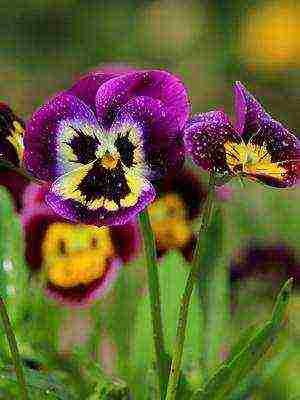
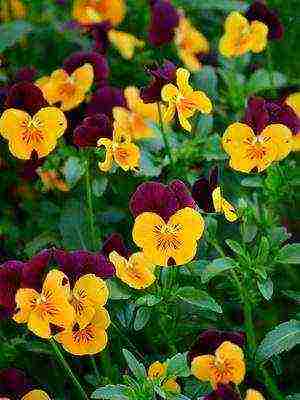
As for the Wittrock variety, he does not have a single classification. There are several of them and each takes into account its own approach:
Difference of variety in size, shape, color:
- bush height (undersized, medium-sized, tall);
- inflorescence size (small flowering and large flowering);
- with a wavy edge (even, slightly wavy, strongly wavy);
- by color (one-color, striped, marble, four-color, multi-colored).
Types depending on the pore of planting, flowering method, color:
- winter varieties (which bloom very early);
- large-flowered (flower diameter up to 10 cm);
- highly wavy and newest varieties (variety series "Swiss Giants").
Look at the photo for pansies of all known varieties and their names:
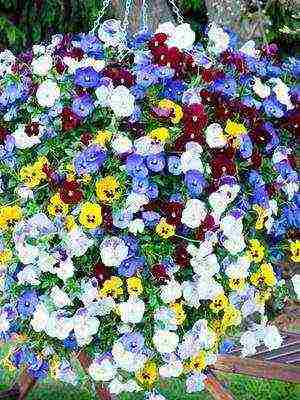
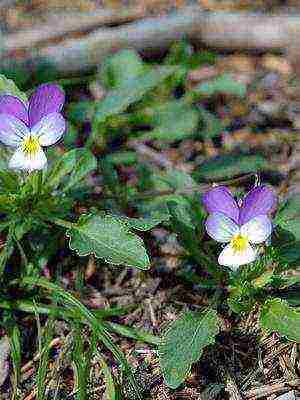

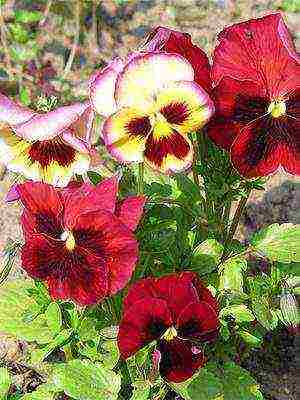


Such a flower can charm anyone. It is not for nothing that for a long time this plant was endowed with magical properties. There is a belief that pansies were used as a means for a love spell. The beauty of these flowers is admired not only by the Slavic peoples, they are popular in different countries. The British, with the help of pansies, confess their feelings to the girls, sending a flower to the chosen one and indicating their name. Inhabitants

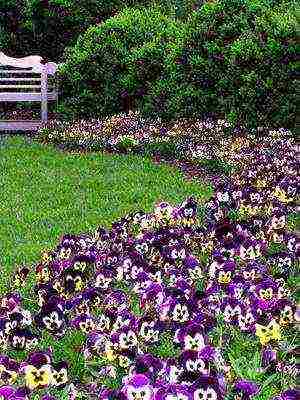
France and Poland use the flower as a symbol of goodbye and parting.
All types of pansies are perennial plant varieties, but most often they are bred as biennials, their inflorescence is similar to a violet. This flower bushes sprawlingly, it grows 15-20 cm in height, the leaves open and stems appear in their axils with a color that reaches 7 cm in diameter.
Take a look at the photo of how a perennial violet looks 3 weeks after planting, if the conditions and care are chosen correctly:
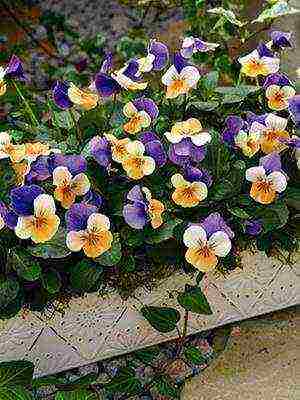
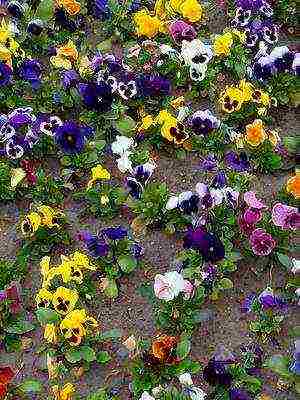
Correct planting of fragrant pansies in open ground
This type of violet, when planted in the open field and with high-quality care, can please with flowering twice a year. This is very convenient for decorating flower beds or designer flower beds. They bloom in early spring and late autumn, depending on when they were planted. To get flowering in early spring, you need to sow seeds in the summer, that is, six months in advance. If the seeds fall into the ground in May or at the very beginning of summer, then the plants will delight with flowering in the fall.

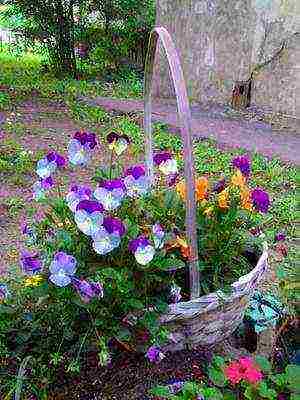
Pansies take root well in the open field, they tolerate wintering well. Of course, if in the fall they were exposed to abundant moisture, and in winter they were not merciful to frost, then freezing is possible. Spring floods can also adversely affect, and under favorable climatic conditions this plant is not particularly whimsical.
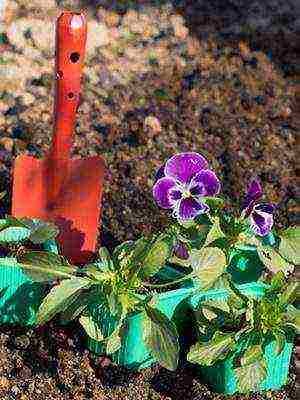
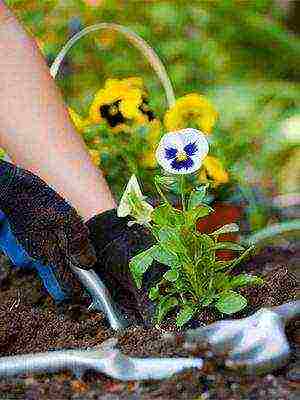
To get a good flowering, you need to know how to properly plant pansies in open ground. It should be borne in mind that the land for sowing must be cleared of weeds and well loosened. Therefore, it will be necessary to make beds and place seeds in the holes, avoiding planting density. When planting pansy flowers in open ground, the first shoots should emerge from the ground in a week, or after two, then the seedlings can be thinned out. The distance between the bushes should be about 20 cm. The soil near the bush must be watered and loosened from time to time so that the root system can breathe freely.

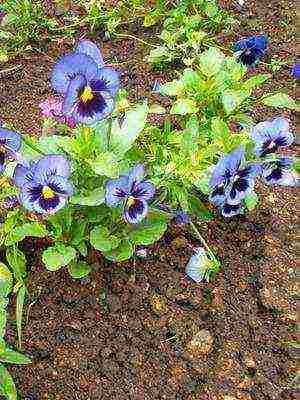
With rational moisture and timely treatment from pansy pests, the next spring will quickly grow and please with abundant flowering. Ready-made flowering plants can be used to decorate all kinds of flower beds and compositions. Florists often decorate wedding bouquets or boutonnieres with violets of this kind. Even a novice amateur gardener can carry out planting pansies in prepared open ground, since this flower does not have special care requirements and takes root everywhere. It is important to remember that if the flower garden is located in a sunny place, then the flowers will be bright and large, if in the shade - a little smaller and paler.

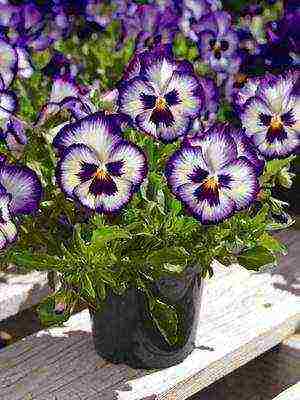
Pansies, regardless of the variety, can be grown both in special greenhouses and in garden conditions in the courtyard of a private house or in the country.
Care when breeding perennial violets
Many violets are not easy to grow through seedlings. At first glance, this is strange, because self-seeding in most species is quite aggressive. The explanation is simple: only fresh seeds germinate well in violets. After storage, they require stratification.
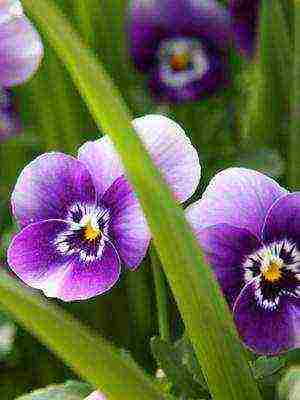

The quantity and quality of flowering can be adjusted by choosing the sowing time and the characteristics of lighting and heating. It is also important to remember that frequent ingress of water on the leaves can provoke rotting, so it is better to water it from below, using a tray, or soak the soil under a growing flower.
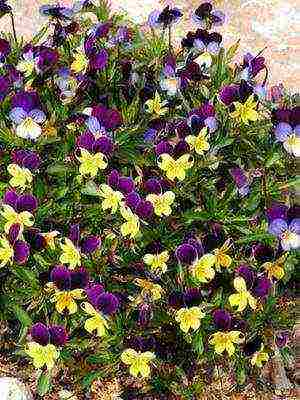
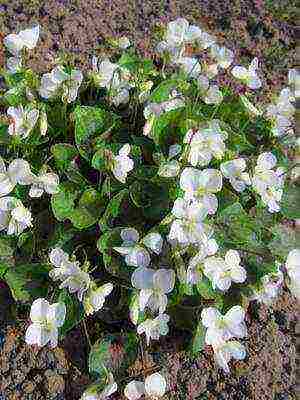
A perennial garden violet does not require spraying when planting and caring for it, but moist air for it, like for most plants, is necessary. To satisfy this need, it is enough to put a small container of water next to the flowerpot. If the plant is outdoors, then more often spray the surrounding area or neighboring plants to provide the necessary moisture level on hot days (approximately 50%).
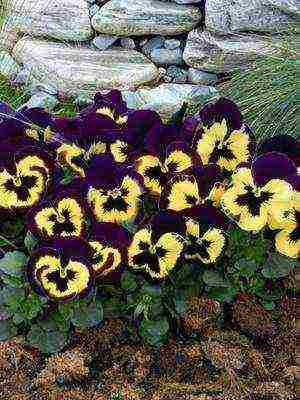
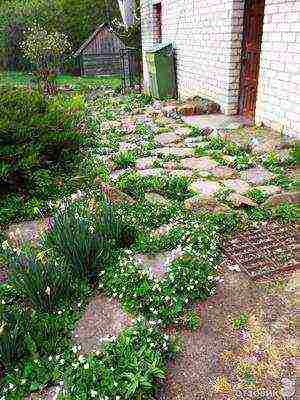
It must be remembered that although violets are not whimsical plants, they are afraid of drafts. This is especially true for flowers that are in the room. And street copies are also better placed in a cozy place.

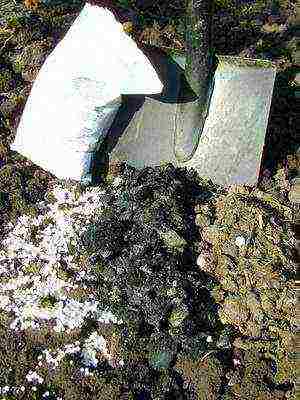
Fertilizer plays an important role in the cultivation of viols. Now there are many different solutions that you can add when watering, or treat the roots with them when planting a plant in the soil.To choose a good fertilizer for violets, you need to focus on the agent for flowering plants. You need to process the plant, following the instructions and dosage indicated by the manufacturer.
How not to make a mistake when buying violets
When the choice fell on a violet for growing flowers at home, then you need to know how not to make a mistake when buying.
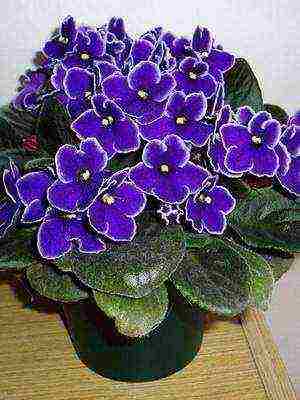
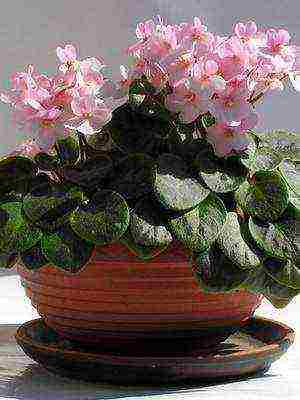
Of course, to purchase seeds, you can explore the assortment offered by various stores. In this case, you need to pay attention to the expiration date and the manufacturer. It would be nice to first read reviews of a similar product on the Internet. You can also heed the advice of experienced friends or florists. But the best option would be to purchase these seeds from people who are breeding viols. In most cases, they take a responsible approach to collecting seeds, which will give good flowering in the future.
If you decide to buy ready-made violets in a flowerpot, then you can use the following tips:
- The plant should have dense leaves, no spots.
- The ends of the leaves should not be dry.
- Lethargy should not be present.
- The violet should be in bloom.
- There should be no smell of rot or delight from the soil.
Choosing the right violet for the interior, you also need to take into account some features:
- Color combination.
- The size of the flowerpot and the outlet itself.
- Lighting of the intended place (the pale flower will become even paler if it stands where there is little light).
- If the walls of the room are dark in color, then the flower should be lighter and brighter.
- The color and style of the flowerpot also needs to be considered.
Perennial violets can be selected in the photo below:
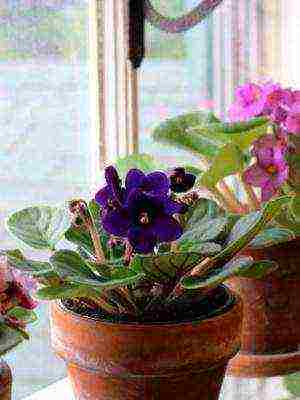
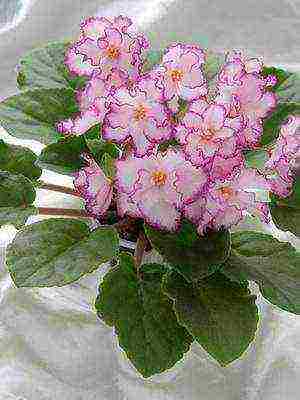
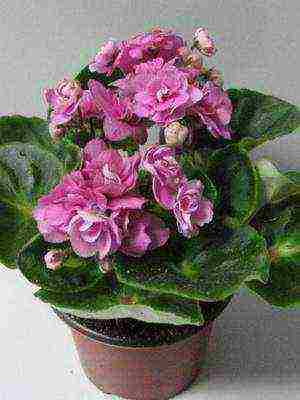
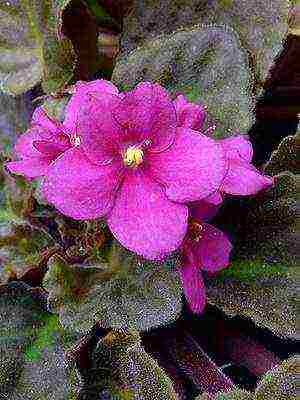
Viola of any kind can successfully blend into a variety of interiors. These flowers look equally harmonious both outdoors and indoors. The main thing will be determined where is the most suitable place for their placement.
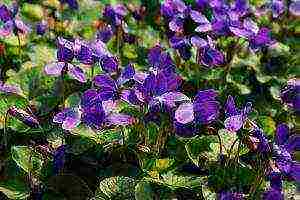
Garden violet - seemingly a typical forest dweller
Tiny violet stars, although unpretentious, are unlikely to be definitely "tame" flowers. This is partly why gardeners love them so much: the delicate perennial garden violet steadfastly retains the charm of a "forest" inhabitant and reminds of wild nature. The glades, where these pretty miniature flowers grow densely, give the impression of naturally occurring corners.
Classification of species
The ancient genus of violet-viola has more than four hundred species branches today. The culture is good because it blooms profusely and for a long time with minimal human participation. If no effort is made, the touching and fragrant garden violet will delight the owners with lush color only in spring. Later, the plant will "go into seeds" (covered with a decent number of bolls) and will lose its decorative effect.
For many, or rather young (usually grows only 3-4 years old) include, first of all, fragrant and horned violet. Among the "breeds" bred by the breeders, there are also those for which the name "pansies" is popularly stuck. They are large-leaved: the aggregate of petals in some cases forms a corolla 5-10 cm in diameter. Other "big-eyed" descendants remind their parent very distantly.
- The fragrant violet is small, incredibly fragrant. The smell "grows stronger" in the evening. Such a baby reaches only 15-18 cm in height, has a creeping stem. The spine is tenacious, easily held on the protrusions. The leaves are in the form of a heart, held in a bunch. The flowers are tiny (up to 3 cm), bluish or purple. There are simple and double varieties. Fresh seeds are needed for planting and successful germination.
- The horned viola is not much more impressive in size - about 8-25 cm "tall". The name is associated with the presence of a spur-like protrusion on the back of most sepals. The usual diameter of the corolla is 1.5-3.5 cm. The shade range is extensive - from blue-white-yellow to orange-red-black. The range of hybrid varieties is impressive, but they are more difficult to "winter" and, as a rule, belong to biennials.
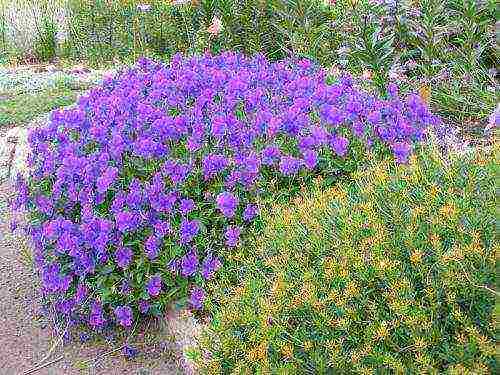
If you methodically pluck the boxes from the bushes, the violet will bloom profusely and for a long time.
There are few lovers of the snow-white beauty-violet, but in vain: she is very attractive in appearance and in the solid circle of her closest relatives there are many large individuals. As for the garden white violet as a species used in gardening, such a phrase is often referred to as conditional. The reason is a significant variety of representatives of the genus of violet light shades, identified with the word "white".
Among the white-leaved specimens there will be klobuchkovaya ("blonde" with purple dots), individual members of the already described "slingshot" company and breeding varieties of aromatic and fragrant relatives of the forest pale purple brotherhood. An Italian-Turkish Parma violet and a large terry Australian-American "white queen" will complement this noble family of snow white.
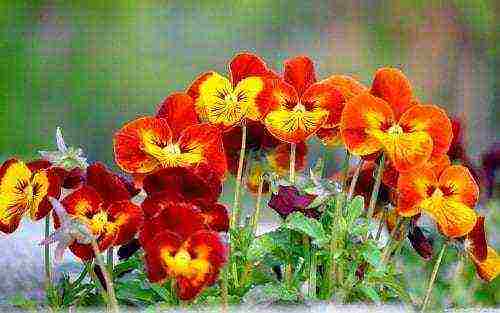
The spectrum of violet shades is wide and varied - red and black colors are relevant in it
Features of planting and reproduction
The best habitat for most varieties of the described flower is moderately sunny open areas of a flower garden or garden. Slightly shaded clearings with damp (but not too wet!) Loose soil are also a suitable environment for the growth of viola. Relative fertility is important for the land, moderation is important for irrigation. Feeding is desirable, a couple of times per season. In winter, it would be nice to cover the area with a layer of soft branches and foliage.
Of the methods for reproducing planting material, the main ones are growing from seeds, cuttings, dividing bushes. There are certain rules for planting and caring for perennial garden violets of different varieties. The most favorable period for seed reproduction (planting) is the transition from summer to autumn, in August-September. The seedlings will sprout next spring, so a cute blooming rug is guaranteed in May.
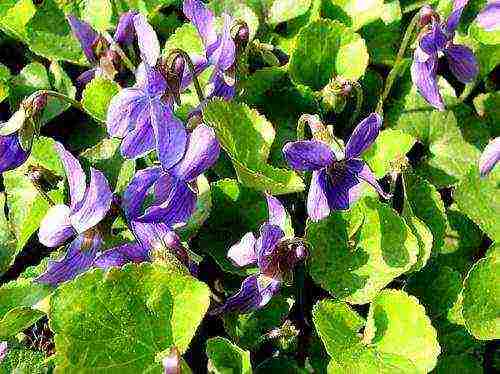
Fragrant violet - unpretentious perennial
Seed handling
Agrotechnical manipulations are not difficult, but some conditions will have to be met. The freshness of the seed is one of them. Sowing into grooves is accompanied by light mulching. Peat or humus is ideal for this process. A densely sown mass will need a pick, with a "step" of 5-7 cm. The beds are spilled with a solution in advance, and the seeds are powdered with a fungicide so that the fungus does not appear.
If the seeds were bought in winter and were planted in boxes, they will need to be covered with foil or glass. Leaky. In a cool place (12-18 °), the plants overwinter successfully - in constantly moist (but not damp!) Soil. Distillation is slow, from one to one and a half to two months. As soon as the seedlings "hatch", it is recommended to move the boxes to a warmer corner, with a temperature of 18-22 °.
Diving after the appearance of the first pair of true leaves is performed as needed, weeding, loosening the base and feeding - too. A complex, non-concentrated fertilizer solution is used. It is added every 10-15 days. Note: seeds sown in spring germinate almost twice as early as "autumn" ones. Self-seeding is also acceptable for them, but ineffective.
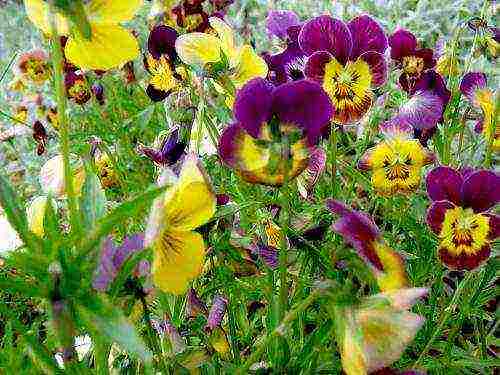
Colored varieties of horned violets are pleasing to the eye
Planting seedlings in the ground
On the site set aside for the violet kingdom, seedling bushes cut from the ground with a formed root are planted at a distance of 30 centimeters, trying to provide a decent nutritional area for the plant. Flowering will begin about a month after the development of the leafy part. Undoubtedly, the violets left to winter on the insulated section of the lawn will bloom earlier.
Vegetative reproduction
It's about bush division and cuttings. The first rejuvenates the variety and prevents the degeneration of the variety. The second allows you to preserve and reproduce even a single copy.

There are hundreds of exotic varieties of violets today - they are used as garden and indoor flowers
Division of bushes
The chain of action "starts" in the spring, shortly before flowering, or in the summer, after flowering ends. Part of the bush is cut off - with a scoop or with a knife - and transplanted to a new site. Bush-making is applied to fragrant violets, moth, horned, two- and three-colored - tall and branched, often mottled with streaks and specks. Non-resistant hybrids such as Pansies are also planted in this way.
Before dismembering the curtain and planting fragments from the plant, remove the remnants of flowers. A bunch of stems with part of the roots is moved into the shade, into a moist (better drained) environment. It's easy to do after rain. It is not necessary to cover the "immigrant". He will take root anyway, proving that planting and caring for a garden violet is not burdensome. By autumn, the bush will bloom profusely, and by winter it will form a root system.
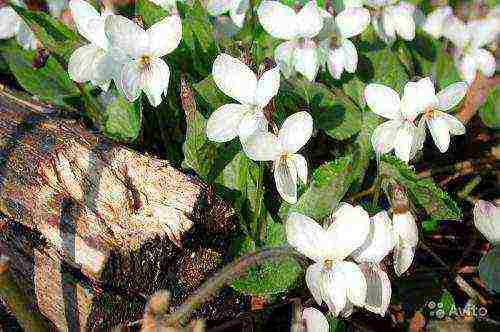
The modesty of the white moth violet gives it a touch of innocence and incredible charm.
Using cuttings
The most suitable time for green cuttings is from May to July. After the loss of bush compactness and crushing of the flowers (and these are common phenomena), the upper shoots with 2-3 nodules are cut off. Root them in two weeks. Engraftment is almost always successful - the group will bloom at the turn of summer and autumn. Later, cuttings will delay the appearance of color by six months - until May-June.
Thematic video
Tips for planting violets (video):
Attractive path spots with cute violets will perfectly fit into flower beds, mixed flower beds, rocky hills, lawns, curbs and "revive" empty meadows around trees. They are modest and not capricious, but they are unusually pretty and full of inner dignity. Carried away by these crumbs, you will noticeably ennoble the aura of your garden and home.
